|
Displaying items by tag: germany
German cultural commissioner Monika Grütters announced on Friday that the country would increase its cultural funding by €90 million for a total €1.3 billion ($1.76 billion) in allocated funds for 2014. The additional funding marks a seven percent increase over 2013.
Grütters said that the budgetary approval by the Bundestag secured, “a solid foundation for the development and creation of successful cultural-political [initiatives].” Among her major achievements since taking over the post from predecessor Bernd Neumann was the doubling of funds allocated to provenance research. The move followed the Gurlitt saga, which initiated a wealth of renewed public support for restitution efforts. Four million euros are now available annually to assist in such research.

German authorities have appointed 13 experts in art history, provenance research and restitution issues to a task force that will be responsible for establishing the history of hundreds of artworks discovered in a dilapidated apartment in Munich this past November. The works, which include masterpieces by Henri Matisse, Marc Chagall, Pablo Picasso and Albrecht Durer, were found in the possession of Cornelius Gurlitt, the son of Hildebrandt Gurlitt. Hildebrandt had been put in charge of selling Nazi looted artworks abroad by Joseph Goebbels, Hitler’s Minister of Propaganda.
Jane Milosch from the Smithsonian, Thierry Bajou from the Musées Nationaux Récupération in France, Sophie Lillie from Vienna, Agnes Peresztegi from Budapest, and Yehudit Shendar and Shlomit Steinberg, both from Israel, will join the task force’s German members -- Uwe Hartmann, the head of Germany’s office for provenance research, art historian Meike Hoffmann, Michael Franz, the head of Germany’s restitution office, Magnus Brechtken, the deputy director for the Institute for Contemporary History in Munich, Roland Kempfle, a Munich-based prosecutor, Heike Impelmann from the office for unresolved property issues and Stephanie Tasch, who represents Germany’s 16 states.
First, the task force will research the ownership histories of the drawings, prints and paintings believed to have been stolen by the Nazis from their Jewish owners. The task force will then investigate the works believed to have been looted by the Nazis from public institutions. So far, authorities have begun photographing and publishing the artworks. Over 450 pieces have been added to Germany’s Lost Art Internet Database.
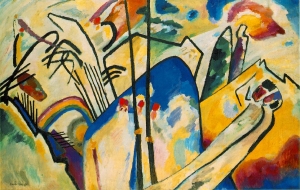
German police arrested two people and raided 28 locations in an effort to halt a multi-million dollar international forgery ring responsible for selling fake paintings they claimed were by Russian avant-garde artists including Wassily Kandinsky (1866-1944). Apartments, business premises, and art galleries in Wiesbaden, Mainz, Suttgart, Munich, and Hamburg were searched by police officers. Over 1,000 items were seized including supposed forgeries and sales documents. Additional searches were carried out in Switzerland and Israel.
The forgers are believed to have sold over 400 works ranging in price from $1,332 to over $1 million since 2005, accruing more than $2.7 million. The two men who were arrested are believed to be the leaders of an international group of six counterfeiters. Private collectors in Germany and Spain acquired most of the fakes sold by the forgery ring.
Confidence in the German art market has been unstable since it was shaken by the largest forgery scandal to date in 2011. Art forger Wolfang Betrachhi was sentences to six years in jail after admitting to painting copies of works by Fernard Leger (1881-1955) and Max Ernst (1891-1976) and then selling them as masterpieces to unwitting collectors.
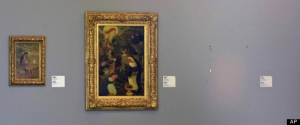
A 46-year-old German man was arrested by authorities in connection to the devastating art heist that took place in the Netherlands on October 16, 2012. The man was arrested in southwestern Germany for allegedly trying to sell the seven stolen paintings back to the Triton Foundation, the owner of the artworks.
The paintings, which include masterpieces by Pablo Picasso (1881-1973), Claude Monet (1840-1926), Henri Matisse (1869-1954), and Paul Gauguin (1848-1903), were on view at the Kunsthal Museum in the Netherlands and have yet to be recovered. The bounty, which includes Picasso’s Harlequin Head (1971), Monet’s Waterloo Bridge, London and Charing Cross Bridge, London (1901), and Matisse’s Reading Girl in White and Yellow (1919), is believed to be worth between $66 million and $266 million.
This is the fifth arrest made in connection to the heist; three Romanian men accused of carrying out the heist were arrested on January 22, 2013 and a Romanian woman was arrested on March 4, 2013 on suspicion of assisting the robbers. Officials are working to determine whether the German suspect had ties to the stolen paintings or was simply trying to scam the Triton Foundation. He was arrested on the grounds of suspected blackmail and is currently under investigation.
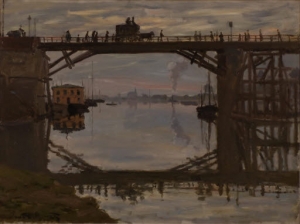
The London branches of Sotheby’s and Bonhams will join forces with the Cologne-based auction house, Lempertz, to sell off works from the late Gustav Rau’s (1922-2002) vast collection. Rau, a well-known art collector and philanthropist, passed away suddenly in 2002, leaving his remarkable collection to Unicef’s German branch. Rau’s holdings, which include many Old Master and Impressionist paintings and sculptures, were estimated to be worth around $600 million at the time of the bequest.
While Unicef has sold a number of Rau’s works to fund ongoing projects over the years, this is the first time a significant portion of the collection has come up for sale. The auction, which is planned to take place this summer, will feature works by Jean-Honoré Fragonard (1732-1806), El Greco (1541-1614), and Claude Monet (1840-1926) among many others. The works are all in pristine condition as Rau either left his collection in storage or offered them to museums for exhibition purposes rather than hanging them in his own home.
All proceeds from the sales will benefit children’s causes, specifically in emerging countries. Rau, who spent much of his life working as a doctor in Africa, was a champion of clean drinking water initiatives and better vaccination practices in developing areas. Unicef plans to use a large portion of the funds to finish a children’s hospital in the Democratic Republic of the Congo that Rau founded before his death.
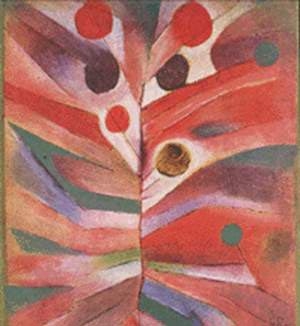
The heirs of Alfred Flechtheim, a prominent Jewish art dealer who fled Nazi Germany during World War II, are urging the German state of North-Rhine Westphalia to return artworks belonging to their relative. The paintings in question, which are by Paul Klee (1879-1940) and Juan Gris (1887-1927), are currently part of the Kunstsammlung Nordhein-Westfalen’s collection in Dusseldorf.
Before the perils of World War II took hold, Flechtheim was an established art dealer in Europe, representing a variety of well-known artists including Klee, Max Beckmann (1884-1950), and a number of French Cubists. Flechtheim ran galleries in Dusseldorf and Berlin, organized many exhibitions, and founded an art magazine. However, Flechtheim’s high standing in the art world made him an easy target for the Nazis. He fled Germany in 1933 shortly after a stream of hateful articles ran in the Nazi press. Flechtheim escaped to Zurich, then Paris before settling in London. After his getaway, Flechtheim’s Dusseldorf gallery was seized and turned over to his former employee Alex Voemel, a Nazi. Flechtheim’s gallery in Berlin was liquidated and his collection, which included works by Pierre-Auguste Renoir (1841-1919), Wassily Kandinsky (1866-1944), Fernand Leger (1881-1955), Georges Braque (1882-1963), and Henri Matisse (1869-1954), was sold.
Mike Hulton, Flechtheim’s great-nephew, claims that Klee’s Feather Plant (1919) and Gris’ Still Life (Violin and Inkwell) (1913) were part of Flechtheim’s private collection and sold under duress for well below their value when he fled Germany. The Kunstsammlung Nordhein-Westfalen does not believe there is enough evidence to support Hulton’s claim. In addition, owners of archives that could help in the case are refusing to let provenance researchers access their information, bringing the dispute to a standstill. Officials from the Kunstsammlung Nordhein-Westfalen assert that if it was proven that Flechtheim was forced to sell the works by Gris and Klee or that he received little to no money for them, that they would part with the paintings, but the current evidence is inconsequential.
Flechtheim’s heirs are currently pursuing restitution for over 100 paintings in museums in the United States, France, Germany, and other European countries.
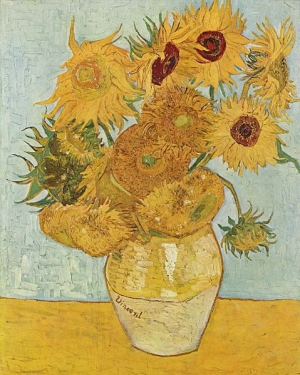
Energy efficient LED lighting, which is widely used in museums across the world, has altered the color of Vincent van Gogh’s (1853-1890) famous Sunflowers (1888). Once a vivid yellow hue, van Gogh’s masterpieces are darkening; scientists have discovered that certain yellow pigments from the 19th century become unstable after exposure to LED lights, turning them a brownish green over time.
Researchers in France and Germany sampled 14 works dating from 1887 to 1890 and tested for the reaction, which affects the oil paint color chrome yellow. A popular pigment at the time, artists such as Paul Cézanne (1839-1906) and Paul Gauguin (1848-1903) often used chrome yellow in their paintings. Upon their discovery, researchers suggested that museums avoid using LED lighting on certain works and switch to a safer illumination alternative.
Van Gogh painted his sunflower series as a welcoming present for his friend, Gauguin, and planned to hang the works in the room where he was to stay while in Arles. A copy by van Gogh from the original series is on view at the Van Gogh Museum in Amsterdam.

On view through January 27, 2013 at the Metropolitan Museum of Art in New York, Extravagant Inventions: The Princely Furniture of the Roentgen’s is the first comprehensive exhibition to focus on the Roentgen family’s cabinetmaking firm, which operated from 1742 into the early 1800s. Extravagant Inventions presents around sixty pieces of furniture, many of which have never been seen outside of Europe.
Abraham Roentgen (1711-1793) and his son David (1743-1807) were pioneering figures in 18th century Continental furnituremaking. Based in Germany, the Roentgen firm’s style is characterized by opulence, inventiveness (they often incorporated hidden compartments and secret drawers into their works), and ornate, finely carved shapes. The Roentgens served clients around Europe including France’s Louis XVI and Marie Antoinette and Russia’s Catherine the Great.
Extravagant Inventions brings together works from various international collections as well as six works from the Met’s own holdings. Highlights include a writing desk (circa 1758-1762) designed by Abraham Roentgen and considered one of the greatest creations from his workshop, a mechanical secretary cabinet (1779) made for King Friedrich Wilhelm II of Prussia, and a pair of marquetry portraits (1775-1780) depicting a man and a woman, which exemplifies the marquetry technique the Roentgens were renowned for.
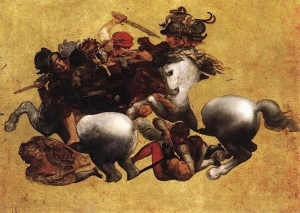
A division of the Italian police department that specializes in art thefts has located a 400-year-old copy of a lost Leonardo da Vinci fresco. Depicting the Battle of Anghiari, the masterpiece was never finished.
The copy, widely known as the Tavola Doria, once adorned a wall of Florence’s city hall, the Palazzo Vecchio, and illustrates a historic battle between Florence and Milan that took place in 1440. It is believed that da Vinci experimented with various fresco-painting techniques before he started work on the battle scene in 1503. Despite his efforts, the paints began to drip and da Vinci was never able to finish the fresco. Over the next few years, the piece deteriorated and the Italian painter, Giorgio Vasari, was commissioned to paint over what was left of the incomplete fresco.
Since the unfinished da Vinci painting no longer exists, copies of the lost artwork are extremely important to art historians and scholars. This particular copy, painted on a small wooden panel, was last seen in public 73 years ago at a Leonardo da Vinci exhibition held in Milan on the eve of World War II. After the exhibition, the work disappeared.
Experts have since determined that the panel was stolen from its owners in Naples and ended up in the hands of a Swiss art dealer. The work was sent to Germany for restoration in the 1960s, made a brief appearance in the 1970s at an art gallery in New York, and by the 1990s was the property of a wealthy Japanese art collector.
Finally back in Italy, the Tavola Doria will be on view at Florence’s Uffizi Gallery during 2013. The work will then spend four years in Japan as part of a loan agreement worked out with the Fuji Art Museum in Tokyo, where it was last exhibited.
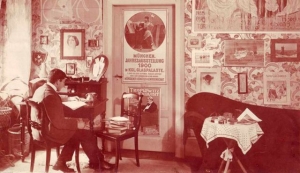
This past March, the highest court in Germany for civil affairs ordered that 4,300 pre-World War II posters looted by Nazis were to be returned to Peter Sachs, a retired airline pilot. Sachs is the son of Hans Sachs, a Jewish dentist who fled Germany in 1938 after being arrested by Nazis and sentenced to the Saschsenhausen concentration camp.
The poster collection, worth more than $5.8 million, was previously kept at The Deutsches Historisches Museum in Berlin. Sachs started his collection in the late 19th century at a young age and went on to publish a poster magazine called Das Plakat, found a society, and give lectures on the subject. Unique works by Henri de Toulouse-Lautrec, Ludwig Hohlwein, Lucian Bernhard, and Jules Cheret are included in the collection.
At the time of its confiscation, Sachs’ collection was the largest of its kind. When the Gestapo seized the posters in 1938, Sachs was told that Propaganda Minister Joseph Goebbels wanted the works for a new museum wing dedicated to “business” art. Sachs’ collection included advertisements for travel destinations and various products as well as propaganda and political posters.
When Sachs arrived in the U.S. with his wife and young son, he assumed that he would never see his collection again. In 1961 he accepted about $50,000 from the West German government, figuring the works had not survived the war. In 1966 when Sachs learned that some of his collection was still intact in East Berlin, he made contact with communist authorities in an attempt to get the posters loaned for exhibitions. He never succeeded.
After Sachs’ death, his son Peter fought a five-year legal battle for the return of his father’s posters after a government panel denied his claim in 2007. The court ultimately ruled that Sachs had never lost legal ownership of the post collection and that Peter, Sachs’ heir, had the right to possession.
Guernsey’s auction house will handle the collections’ sale in three intervals. The first auction is scheduled for January 18, 2013 and the second and third series will take place at six-month intervals. Guernsey’s hopes to find a single buyer for the collection and has been in talks with museums in Germany, Israel, and the U.S.
|
|
|
|
|